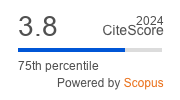Article | Open Access
Environmental Microsegregation: Urban Renewal and the Political Ecology of Health
| Views: | 2467 | | | Downloads: | 1884 |
Abstract: In recent years, multiple-burden maps were developed as a tool for assessing environmental health inequities in cities. Maps of this kind are particularly useful in identifying disadvantaged neighbourhoods. In the case of Erlangen (Germany), the historical development of poorer neighbourhoods may mean that their situation as regards environmental assets is relatively favourable. However, urban renewal often precipitates the redistribution of environmental “goods” and “bads” in such a way as to place a disproportionate burden on socio-economically deprived people and privilege the better-off. This type of environmental microsegregation occurs on a scale below that of neighbourhoods, which means that newly developed approaches in urban geography may fail to identify it. This article details the roots of these processes in changes in the structure of ownership and the respective administration of housing and considers possible methods for monitoring these tendencies.
Keywords: environmental justice; Germany; microsegregation; political ecology; public health; urban renewal
Supplementary Files:
Published:
© Klaus Geiselhart, David Spenger. This is an open access article distributed under the terms of the Creative Commons Attribution 4.0 license (http://creativecommons.org/licenses/by/4.0), which permits any use, distribution, and reproduction of the work without further permission provided the original author(s) and source are credited.


